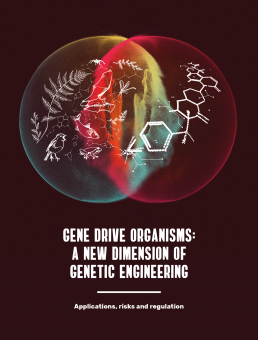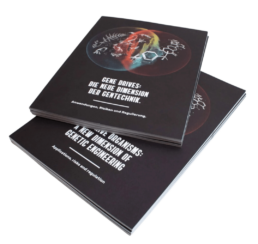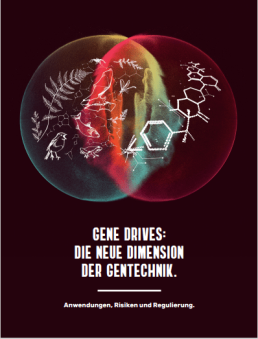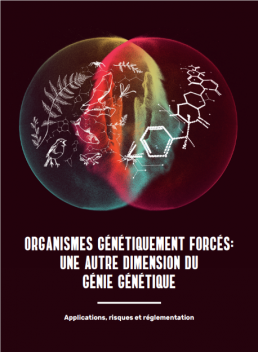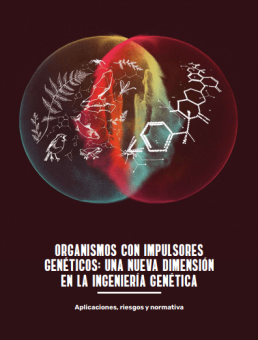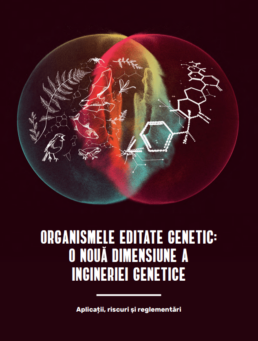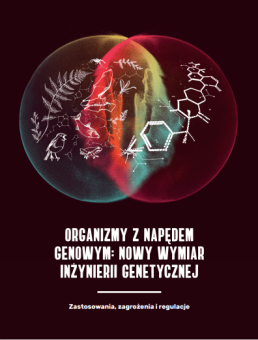IUCN: The discussion on gene drives
The discussion on gene drives in the World Conservation Union (IUCN)
In view of the possibility of using gene drives to remove introduced invasive species from sensitive ecosystems, the International Union for Conservation of Nature (IUCN), also known as the World Conservation Union, has been discussing how to deal with this technology since late 2015.
At its General Assembly in Hawaii in September 2016, the IUCN adopted a resolution¹ that, among other things, mandated IUCN to prepare a scientific report on the implications of synthetic biology and gene drives for biodiversity conservation. Based on this scientific report, IUCN originally intended to take a position on the role of gene drive technology for nature conservation at its subsequent General Assembly in 2020.
In part through public protest and at the urgin of global conservation luminaries², among others, IUCN committed in its 2016 resolution to refrain from any support or endorsement of research, field trials or use of gene drive technology until the report would be available.
The report, entitled Genetic frontiers for conservation³, was published in May 2019 and met with harsh criticism from IUCN member organisations as well as conservation and development organisations from around the world.
An analysis⁴ conducted by the research and advocacy NGO ETC Group concluded that a majority of the report’s authors were known proponents of genetic engineering and should not have been engaged by IUCN, in part because of their economic self-interest in the development of the technologies studied. In a subsequent open letter signed by 231 civil society organisations and several scientists, the report was criticised as “regrettably one-sided”, “biased” and “inappropriate for the intended policy discussion”. This report is not in line with the precautionary considerations of the Hawaii resolution. The signing organisations therefore called on IUCN to commission another scientific report based on a precautionary analysis of the risks of the technology and to wait until such a counter-report is available before taking a decision on the issue.⁵
In a similar vein was the request of a letter from 23 IUCN members to the IUCN Council in October 2019. According to its signatories, more time is needed for a fundamental, comprehensive, balanced discussion based on the precautionary principle, with greater involvement of IUCN Members, before any IUCN decision is taken.⁶
Faced with this criticism, the IUCN Council withdrew its plan to adopt a position at its membership process originally planned for June 2020. Instead, principles⁷ for the discussion around the topic were defined in a consultation open to members. These are to be voted on at the IUCN World Conservation Congress in 2021 and will serve as the basis for disscussions until position will be voted on at the following Members’ Assembly.
[1] IUCN Library System Website (2016). IUCN, International Union for Conservation of Nature Resolution; c2020. WCC-2016-Res-086 – Development of IUCN policy on biodiversity conservation and synthetic biology. World Conservation Congress; 2016; Hawaii. Online: https://portals.iucn.org/library/sites/library/files/resrecfiles/WCC_2016_RES_086_EN.pdf
[letzter Zugriff: 07.12.2020]
[2] SynBioWatch Website (2016). A Call for Conservation with a Conscience. No Place for Gene Drives in Conservation. Online:
https://www.synbiowatch.org/wp-content/uploads/2016/09/letter_vs_genedrives.pdf [letzter Zugriff: 07.12.2020]
[3] Redford KH, Brooks TM, Macfarlane NBW, Adams JS (2019). Genetic frontiers for conservation: an assessment of synthetic
biology and biodiversity conservation: technical assessment. IUCN Publication. Online: https://portals.iucn.org/library/node/48408
[letzter Zugriff: 07.12.2020]
[4] ETC Group Website (2019). ETC Group. Driving Under The Influence? A review of the evidence for bias and conflict of interest in the IUCN report on synthetic biology and gene drive organisms. Online: https://www.etcgroup.org/sites/www.etcgroup.org/files/files/etc-iucn-driving_under_influence.pdf [letzter Zugriff: 07.12.2020]
[5] GeneWatch UK Website (2019). GeneWatch UK. Open letter to the IUCN regarding the report Genetic Frontiers for Conservation. Online: https://www.genewatch.org/uploads/f03c6d66a9b354535738483c1c3d49e4/IUCN_let_16July2019.pdf
[letzter Zugriff: 07.12.2020]
[6] Institute for Nature Conservation in Albania Website (2019). Instituti për Ruajtjen e Natyrës në Shqipëri. Open Letter by the undersigned IUCN Members to the IUCN Council. Online: https://inca-al.org/sq/postimet/njoftime/open-letter-by-the-undersigned-iucn-members-to-the-iucn-council [letzter Zugriff: 23.03.2021]
[7] IUCN Congress 2020 Website (2020). IUCN; c2020. 075 – IUCN Principles on Synthetic Biology and Biodiversity Conservation. Online: https://www.iucncongress2020.org/motion/075 [letzter Zugriff: 07.12.2020]
Events
Events
Exhibition stall “Stop Gene Drives”
Saturday, 4.09.2021 – Friday, 10.09.2021 // 10.00h – 22.00h CET
Exhibition stall „Stop Gene Drives“ in the IUCN World Congress Exhibition, Neutral zone – Stall A 2
Public event at the IUCN World Congress
Saturday, 04.09. 2021 // 18.30h – 20.30h CET
Public event at the IUCN World Congress: „Ecosystem engineering and species eradication through genetic engineering? Fundamental questions for nature conservation.
On-site only;Hall: H8 – Palais de l’Europe; Room: H8 – 2 Forêt d’Orient
Press conference “Genetically engineering ecosystems?”
Monday, 06.09.2021 // 10.00h – 10.30h CET
Press conference “Genetically engineering ecosystems? – Nature conservation at a crossroads.“
On-site: Room: H9 – B 11 Press Conference Room – Callelongue
Live streamed for accredited journalists and registered participants via https://www.iucncongress2020.org/
Language: Session held in English with interpretation
In IUCN Program: https://www.iucncongress2020.org/
programme/official-programme/session-52577
Recommendation: Risk assessment of genetically modified organisms
Risk assessment of genetically modified organisms
Recommendation: Strengthen the precautionary principle in the risk assessment of genetically modified organisms in the EU through exclusion criteria.
A contribution by Dr. Christoph Then
The precautionary principle, as enshrined in EU Directive 2001/18, can only work if effective measures can actually be taken to protect the environment and human health in cases where this appears necessary. Retrievability (i.e. controllability in time and space) is a crucial prerequisite for this.
“Member states shall ensure, in accordance with the precautionary principle, that all appropriate measures are taken to avoid adverse effects on human health and the environment which might arise from the deliberate release or placing on the market of GMO” (EU Directive 2001/18, Article 1). As soon as evidence emerges for an actual risk to humans and the environment, emergency measures must be taken: “Member states shall ensure that emergency measures, such as suspension or termination of the placing on the market, are taken in the event of a serious risk […]” (EU Directive 2001/18, Article 23). In addition, there is the provision from Article 13 of the directive that marketing authorization may only be granted for ten years. Thereafter, the approval must be reviewed again on the basis of monitoring. If the genetically modified organism loses its approval, it must be removed from the environment again.
The release or placing on the market of genetically modified organisms whose spread cannot be controlled is fundamentally in conflict with these provisions. If a GMO can no longer be retrieved from the environment, the enacting of the precautionary principle becomes impossible.
In this context, the GeneTip project, funded by the German Federal Ministry of Education and Research (BMBF), was the first research project in Germany to address the prospective technology assessment of gene drive organisms. [1] One result of the project is the recommendation to introduce a new central mechanism for the risk assessment of GMO: the designation and definition of so-called reasons for concern (in simple terms, factually justified risks). Such reasons for concern are often identifiable at an early stage of research and development and could lead to the characterization of a GMO as “of particular concern”. To this end, the authors propose, among others, the following criteria for the identification of reasons for concern:
- Impossibility of making reliable forecasts
- Interventions in systems that are particularly critical for human health
- Interference with ecological systems that are pre-stressed or have tipping points
- Lack of technical maturity and reliability
- Particularly wide reach, to the point of global and irreversible spread of GMO
- The ability to spread in natural populations
According to the report of the GeneTip project, a characterization as a ‘GMO or construct of very high concern’ could lead to the same consequences as stipulated for substances regulated under the EU chemicals legislation REACH and the EU pesticides legislation, respectively. Here, the estimation of the spatial-temporal complexity or controllability plays an important role.
The REACH regulation states that “experience at international level shows that substances with persistent, bioaccumulative and toxic properties or with very persistent and very bioaccumulative properties are of particular concern.”[2] Therefore, REACH established appropriate criteria to define persistent, bioaccumulative and toxic substances, as well as substances that are particularly bioaccumulative and persistent.
The EU regulation on the authorization of pesticides integrates these criteria for POP (persistent organic pollutant), PBT (persistent, bioaccumulative, toxic) and vPvB (very persistent, very bioaccumulative) into the decision-making process as exclusion criteria, which mean that authorization can generally be refused and the authorization process is not continued.[3] The decisive factor is not only the toxicity of a substance, but also its behavior and fate in the environment. If a substance is classified as vPvB, it cannot be approved under this EU regulation, even if long-term damage has not been proven.
According to the final report of GeneTip, such cut-off criteria could also be helpful in the approval of GMO and gene drive organisms. If genetically modified organisms escape spatiotemporal controllability because they can replicate in natural populations without effective control of their persistence and spread, a sufficiently reliable risk assessment would not be possible. The approval process cannot continue and a release of the GMO cannot be authorized.
The results of GeneTip were taken into account by the expert group (AHTEG) advising the Conference of the Parties to the UN Convention on Biological Diversity. Among other things, unforeseen effects that occur only after several generations are named as a specific challenge for risk assessment.[4] In contrast, the European Food Safety Authority (EFSA) largely ignores these challenges in its report submitted in November 2020.
Dr. Christoph Then
Dr. Christoph Then is head of the Institute for Independent Impact Assessment in Biotechnology (TestBiotech) and co-author of the GeneTip project. Testbiotech is concerned with impact assessment in the field of biotechnology, calls for and promotes independent research, examines ethical as well as economic consequences, and tests risks to humans and the environment. Testbiotech provides industry-independent expertise and thus aims to strengthen the decision-making competence of society.
——————
[1] 121 Gene Tip website (without year). Testbiotech e.V. Institute for Independent Impact Assessment of Biotechnology. BioTip pilot study: Gene Drives at Tipping Points – Precautionary Technology Assessment and Governance of New Approaches to Genetically Modified Animal and Plant Populations. Online: https://www.genetip.de/en/biotip-pilot-study/ [last accessed Dec. 07, 2020].
[2] EUR-Lex Website (2006). Publications Office of the European Union. Regulation (EC) No 1907/2006 of the European Parliament and of the Council of 18 December 2006 concerning the Registration, Evaluation, Authorisation and Restriction of Chemicals (REACH), establishing a European Chemicals Agency, amending Directive 1999/45/EC and repealing Council Regulation (EEC) No 793/93 and Commission Regulation (EC) No 1488/94 as well as Council Directive 76/769/EEC and Commission Directives 91/155/EEC, 93/67/EEC, 93/105/EC and 2000/21/EC. Online: https://eur-lex.europa.eu/legal-content/EN/TXT/PDF/?uri=CELEX:32006R1907&from=EN [last accessed: 07.12.2020]
[3] EUR-Lex website (2009). Publications Office of the European Union. Regulation (EC) No 1107/2009 of the European Parliament and of the Council of 21 October 2009 concerning the placing of plant protection products on the market and repealing Council Directives 79/117/EEC and 91/414/EEC. Online: https://eur-lex.europa.eu/legal-content/EN/TXT/?uri=celex:32009R1107 [last accessed Dec. 07, 2020].
[4] Convention on Biological Diversity. Ad Hoc Technical Expert Group on Risk Assessment (2020). Report of the Ad Hoc Technical Expert Group on Risk Assessment. CBD/CP/RA/AHTEG/2020/1/5. 15. April 2020, Montreal, Canada. Online: https://www.cbd.int/doc/c/a763/e248/4fa326e03e3c126b9615e95d/cp-ra-ahteg-2020-01-05-en.pdf
Resources
Resources
Publications
Read and dowload our Gene Drives Brochure. Our comprehensive 45-page brochure is available in: German, English, French, Romanian, Polish, and Spanish.
Multimedia
Explore a range of videos and infographics covering the subject of gene drives.
Archive - Resources
Resources
Publications
Read and dowload our Gene Drives Brochure. Our comprehensive 45-page brochure is available in: German, English, French, Romanian, Polish, and Spanish.
Multimedia
Explore a range of videos and infographics covering the subject of gene drives.
Publications
Brochure
Gene Drive Organisms: A New Dimension Of Genetic Engineering. Applications, Risks and Regulation.
Published by: Save Our Seeds
Authors: Volker Henn, Mareike Imken
Last review: May 2021
Available in English, German, French, Spanish, Romanian, and Polish
You can order printed copies (English or German only) for 5€ per copy including postage under:
stop-genedrives@saveourseeds.org (Please don´t forget to write us an request trough E-Mail with your adress!)
Please transfer the donation to the bank account below, by indicating the intended use as follows: Gene Drive publication + amount + name + surname
Zukunftsstiftung Landwirtschaft
IBAN DE83 4306 0967 0030 0054 01
BIC GENODEM1GLS
intended use:: Gene Drive publication + amount + name + surname
Publications-entwurf
Gene Drives. The new dimension of genetic engineering.
Applications, Risks and Regulation.
Download the report here:
Gene Drives_ A new dimension of genetic engineering

